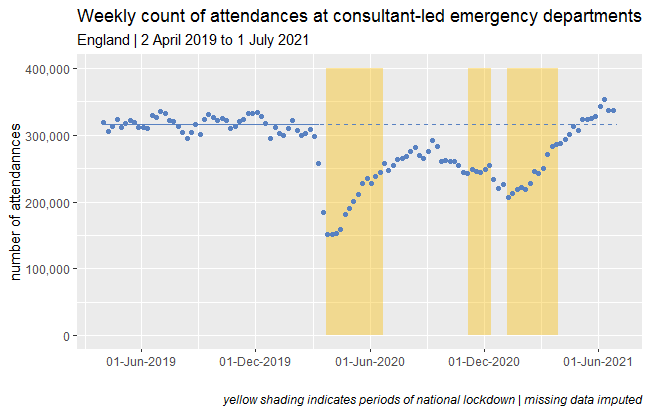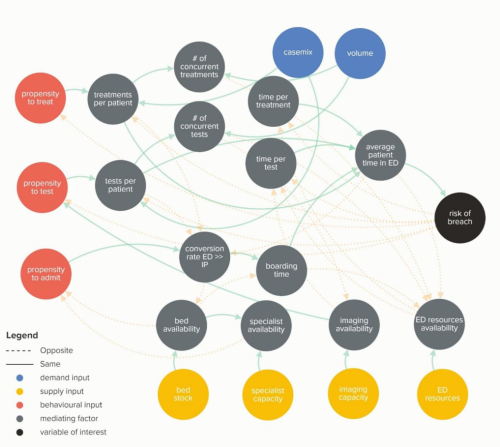Earlier this year, the Strategy Unit reported how levels of attendances at consultant-led emergency departments dropped dramatically in the early days of the COVID pandemic. Rates crept back up during the first lockdown but never reached pre-pandemic levels, and rates fell away again as the local tiered and subsequent national lockdowns were imposed.
By May this year, however, rates had returned to normal levels. In the first three weeks of June 2021, attendances were 9% higher than in the same weeks in 2019. Indeed, attendances in the second week of June reached record levels.
This average increase will not be experienced by all emergency departments (EDs). Many will have seen far greater increases, placing immense pressure on both staff and systems. It seems almost inevitable that increased attendances will lead to increased waiting times. And the evidence is clear: longer waiting times are associated with poor outcomes and adverse events for patients.
It is too early to tell whether this is a blip, the ‘new’ normal’, or just the start of a longer upward trend. But the school holidays are only two weeks away – and this year they may bring fresh challenges.
Attendance rates in August are usually out-of-step with seasonal patterns. Inner city EDs often see attendance rates fall as local residents travel away for holidays. Conversely, EDs in coastal towns can see rates increase. ED staff also take leave, reducing capacity to manage patients.
This summer will be different. Overseas holidays will be uncommon, and UK-based holiday capacity is likely to be maxed out. But ED staff will still need to take leave – particularly those with school-aged children, and particularly following a gruelling pandemic.
August 2021 is likely to be another especially challenging period for EDs.




